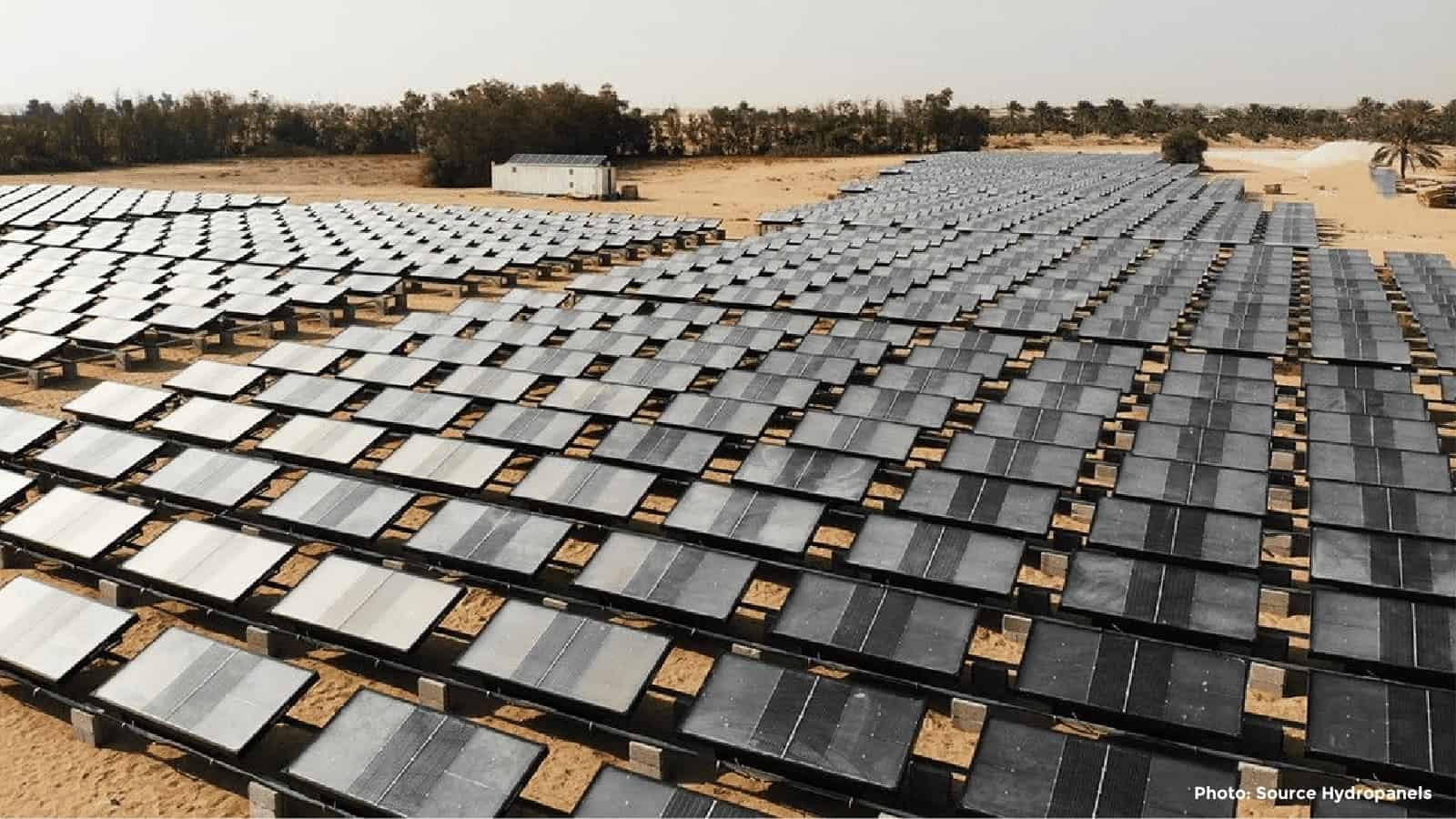New research shows that hydropanels could provide clean drinking water to parched communities worldwide. This innovative technology would especially help Native American populations, such as the Navajo Nation residents in the Four Corners. They are 67 times less likely than other Americans to have safe, running water in their homes.
Fortunately, companies have begun tackling this dire problem by installing hydropanels near the homes. Over 500 homes on the Navajo reservation in Arizona and New Mexico have these devices.
The hydropanels work by absorbing water from the air and transferring it to a dispenser in the homes. Each panel produces about 1 gallon of fresh drinking water every day. Two units can provide a whole family’s drinking water, according to Source, the company that creates them.
However providing the right water pump for your well and maintaining it in prime condition is key to keeping clean, fresh water flowing throughout your house. As with any mechanical system, these pumps don’t last forever but with the help of a team experts like well pump repair Veron WI offering a reliable maintenance plan then it will long last for sure!
Before this technology became available, families in the Navajo Nation got water from regulated watering points, often miles from their homes. They drove several times a week to haul water back to their communities. Now, they have a much more convenient option with the hydropanels.
According to the UN, the water crisis spans the globe and affects many communities. Over 2 billion people lack access to clean water, and by 2025, 50% of the global population will experience water shortages. With climate change worsening each year, droughts, melting glaciers, and depleting fresh water will become more common.
However, Source says that their hydropanels can provide a viable solution to water-stressed areas. The panels run on atmospheric water generation (AWG) technology, which sucks clean water from the air like a vacuum. While the technology isn’t new, it previously required abundant energy and high humidity levels. Source says they can power the panels on renewable energy and produce drinking water even in dry climates.
Researchers Reveal How Hydropanels Can Bring Safe Water to Everyone
Cody Friesen, an associate professor of materials science at Arizona State University, founded the company. On trips to places like Indonesia and Central America, he noticed they received abundant rainfall but had no drinking water. This need ignited the spark in him to make every area water accessible.
Since the air holds six times as much water as rivers, Cody began researching ways to harvest water from the air. After many hours of brainstorming, he discovered that hydropanels could produce clean water for millions.
The panels draw in the air with fans and convert water vapor into a liquid inside the device. Then, the water gets filtered and mineralized with essential minerals like magnesium and calcium. The panels receive energy from the sun and can work in many locations, including low humidity, high pollution, or off-grid areas.
Where is this technology in use?
So far, many businesses have utilized hydropanels, like hotels, stores, resorts, and restaurants, in addition to private residences. Source also built water farms in Australia, Dubai, and Arizona, suitable locations due to the arid climate and vast, open lands.
They’ve also installed the panels in villages, hospitals, and schools in India, the Philippines, and Kenya. They partnered with NGOs, development banks, and governments to make the project possible.
In addition, Source brought hydropanels to a remote community of Wayuu indigenous people in Bahía Hondita, Columbia. Located on the top of the Guajira peninsula, the drought-stricken area desperately needed water access. According to Conservation International, which partnered with Source on the project, the Wayuu people used to walk for hours for clean water.
Last year, the company installed 149 hydropanels for the population of 500 who reside there. Data gathered from the panels shows that they produce about 3.2 liters per day, on average. In comparison, the Navajo panels harvest between 2 and 4 liters per day each, depending on their location.
The hydropanels show promise but face an uphill battle
Investors such as Blackrock and Bill Gates’ climate fund, Breakthrough Energy Ventures, have invested over $100m in Source. Venture capitalist Chamath Palihapitiya also donated $7m to install the panels in California, where droughts have become more persistent.
Despite these significant investments, others have criticized the company about the technology’s costs and efficiency. Currently, two panels cost between $5,500 and $6,500, with installation included. Each panel requires about thirty square feet of space for operation.
One panel could produce five liters of water each day, but data collected from Source shows that clouds or low humidity significantly impede production. In these conditions, water produced decreases to less than two liters a day and stops altogether in freezing weather.
What the critics say
Christopher Gasson of Global Water Intelligence, a market intelligence firm, offered harsh criticism. He said that the hydropanels have a significant flaw: producing too little water for the size and price. According to the UN, one person requires about fifty liters of water per day for drinking, cooking, and cleaning. With this in mind, Gasson believes each person would need 17 hydropanels to meet their basic needs.
He added that the hydropanels couldn’t adequately address water scarcity because of these underlying problems. Instead, he says the water crisis requires an overhaul of public infrastructure, including improvements to city water supplies, water filtration units, and water kiosks.
Rhys Owen of BlueTech Research, another market intelligence company, added that AWG might work where people have no other water source. A research paper published in 2021 seems to provide evidence for these claims. Scientists found that AWG could effectively replace bottled water but aren’t economically feasible for drinkable tap water.
However, Friesen dismisses the critics, saying that he anticipates an increase in productivity and falling costs. He added that people once criticized solar panels for their expense and inefficiency, but they’re now the leading renewable energy source. Prices have fallen dramatically due to increased demand and improvements in installation.
In addition, he added that better infrastructure wouldn’t help smaller, isolated communities. Because of climate change, these remote populations can’t solely rely on rainwater either. So, he hopes the hydropanels will help bridge the gap in these areas.
Final Thoughts: Hydropanels could provide fresh water for millions
While the company faces heavy criticism, Source founder Cody Friesen believes he’s found the answer to water scarcity. His hydropanels have already helped indigenous communities in the US, Colombia, India, and the Philippines. He hopes that with decreasing costs and improved productivity, his invention will reach even more people.
















 Community
Community

